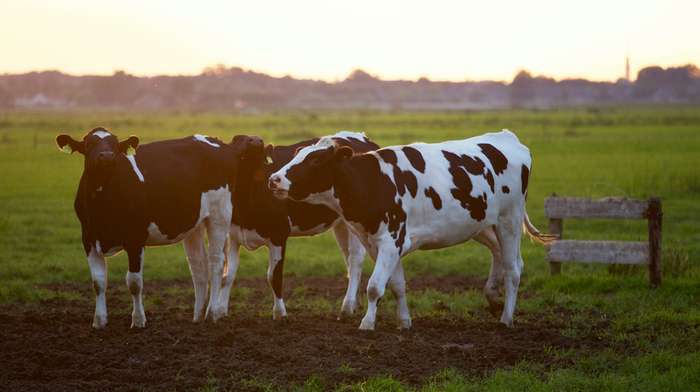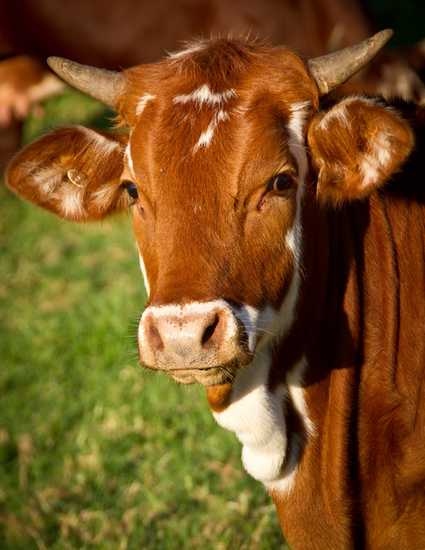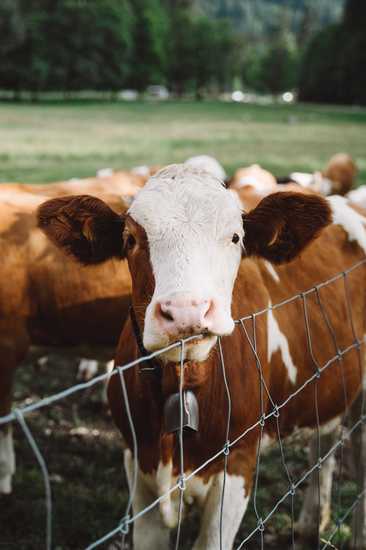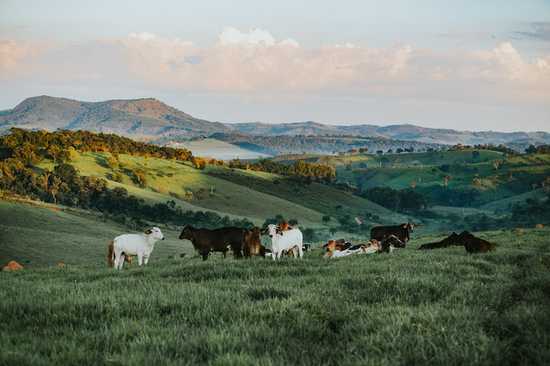Bloat is a serious cow problem and can be fatal if not treated quick. There are many different ways to treat flatulence. But one of the most effective is to stick a needle into the cow’s stomach. It releases the gas that causes bloat, allowing the cow to digest the feed properly.
It is important to act quick if you see a cow with bloat. The best way to do this is to stick a needle into the cow’s stomach. It releases the gas that causes bloat and allows the cow to digest the food proper.
There are a few things to keep in mind when inserting the needle. First, it is important to insert the needle in the right place. The best place to insert the needle is in the middle of the cow’s stomach, below the ribcage. Second, it is important to use a sterile needle. It will help prevent infection.
Once the needle is inserted, the gas released, and the bloating begins to subside. It is important to check the cow careful during this process to ensure. That the bloat does not return. If the bloating returns, it is important to insert the needle again.

Bloat is a serious cow problem and can be fatal if not treated quick. But, you can quick and effectively treat. Flatulence by sticking a needle into the cow’s stomach.
What are the symptoms of bloat in cows?
Symptoms of bloat in cows are excessive gas accumulation in the rumen. Distended abdomen, rumen standing still or hardly moving. And digging the ground with its front legs. If the cow is found early enough, walking and turning the cow can help relieve gas build-up. If the cow found later when it is down on its side. The rumen contents should removed through a tube on the side of the cow’s neck. The symptoms of bloat in cows caused by an excessive accumulation of gas in the rumen. The cow’s four-chambered stomach. Several things, including overeating, can cause it. Eating too much lush green grass, or drinking water too quick. Bloating is a serious condition and can be fatal if not treated quick. Several things can done to prevent bloat. Including avoiding sudden changes in diet. Not allowing cows to graze on fresh green grass provides them with plenty of dry hay to eat.
How can you prevent bloat in cows?
Bloat is a condition that can affect cattle of all ages and breeds but is most common in dairy cows. Flatulence occurs when an animal’s rumen, or first stomach, distends with gas. This gas build-up caused by an imbalance in the normal intestinal flora. Which results in an overgrowth of ‘. As the gas builds up, it puts pressure on the animal’s diaphragm, making it difficult to breathe. Bloating can also cause the rumen to twist. Which cuts off the blood supply to the rest of the stomach and can lead to death.
Several things can done to prevent bloat in cows. First, providing a well-balanced diet with plenty of forage is important. Forage should make up at least 60% of the cow’s diet and be of good quality. Second, cows should have access to plenty of fresh, clean water. It is important to avoid overwatering as this can also contribute to bloating. Third, cows should kept on a regular deworming and vaccination schedule. It will help keep the cow’s immune system strong. And help prevent the overgrowth of intestinal flora. Finally, monitoring the cow’s environment for

anything that could cause bloat is important. It includes keeping the stable clean and free of mould. And avoiding using corrugated cardboard bedding.
What are the consequences of bloat in cows?
Flatulence is a condition that can occur in cows and other animals when they swallow too much air. The air then becomes trapped in their stomach and cannot escape. Causing the stomach to distend. It can lead to many health problems. Including difficulty breathing, inability to burp or vomit. And increased pressure on the animal’s diaphragm. If left untreated, flatulence can be fatal.
Flatulence in cows has several consequences:
- As the stomach expands, it puts pressure on the animal’s lungs, making it difficult for them to breathe. It can lead to a build-up of carbon dioxide in the blood, which can be fatal.
- Stomach expansion can also cause the cow’s diaphragm to shift. Which can cause serious health problems.
- The cow can die from suffocation or a build-up of toxins in the blood if the condition is not treated.
Bloating is a serious condition that can have fatal consequences. If you suspect your cow may bloated, it is important to seek veterinary care immediately.
What are the treatment options for bloat in cows?
Flatulence, or the accumulation of gas in the rumen, is a common condition in cows that can be very dangerous. If not treated quick, bloat can cause the death of the cow. There are several treatment options for flatulence. But the most common and effective is using a rumenotomy.
A rumenotomy is a procedure where a veterinarian makes an incision in a cow’s rumen or first stomach. It allows the gas to escape and the cow to start digesting again. A rumenotomy is a fair simple procedure, but it must done quick to be effective. If bloat is not treated quick, it can cause the cow’s death.
There are several other options for treating flatulence. But rumenotomy is the most common and effective. If you have a bloated cow, you should contact your vet immediately and have them perform a rumenotomy.
How do you know a cow is suffering from bloat?
Bloat is a condition that can affect cows and other ruminants. It occurs when an animal’s stomach fills with gas, which can cause the stomach to twist and rupture. Bloating can be fatal if not treated immediately.

There are several signs that a cow may be suffering from bloat. These include:
1) The cow may have a distended belly and look uncomfortable.
2) A cow can lie down and get up often.
3) The cow may bellow or make other distress calls.
4) The cow may have increased heart rate and breathing.
If you suspect a cow may suffer from bloat, it is important to seek veterinary help immediately. Treatment usually involves using a stomach tube to relieve gas. And prevent the stomach from rupturing. In some cases, surgery may be necessary.
What are the most common causes of bloat in cows?
Flatulence is a condition that can affect cattle of all ages and breeds. And is one of the cattle’s most common and costly digestive disorders. Bloating occurs when the stomach fills with gas and puts pressure on the rumen. The large first chamber of the stomach. The animal cannot eject or ruminate (the process of breaking down food in the stomach). And the rumen presses on the diaphragm, making it difficult for the animal to breathe. If left untreated, bloating can lead to death.
There are two types of flatulence: foam flatulence and free gas flatulence. Foamy bloat is the most common and occurs when the gas mixed with foam from the animal’s saliva. This bloating is usually not as severe as free gas bloating, but it can still be fatal if not treated quick. Free gas flatulence occurs when the gas is not mixed with anything and is the more severe of the two types.
There are several possible causes of bloating. But the most common are eating too much of a new food or drinking too much water too quick. Other possible causes include:
- Eating spoiled or mouldy feed.
- Eating too rich a food (such as corn or grain).
- Drinking milk too soon after a meal.
Cattle are also more prone to bloat. If they are nervous or stressed, which can happen. When they moved to a new location or introduced to new animals.
With proper prevention and treatment, most cattle will recover from bloat. But, it is a serious condition that can be fatal. So it is important to be aware of the symptoms and causes of bloating and have a plan in place in case it occurs.
How can you tell if a cow is at risk of bloat?
Observing its behaviour is the most reliable way to determine if a cow is at risk of bloat. If a cow is lying down and not moving, it is at risk of bloat. If a cow eats quick and looks distressed, she is also likely at risk of bloat. The only way to confirm if a cow is at risk of bloat is to take the temperature. A cow’s normal body temperature is 101.5 degrees Fahrenheit. If a cow’s body temperature is above 103 degrees Fahrenheit, it is at risk of bloat.
Final Words:
Bloating is a very rapid accumulation of digestive gas in the rumen. (the largest of the four stomachs in cattle). Under normal circumstances, cattle belch excess gas when chewing. A miracle regurgitated grass/clover from their rumen. It is normal for cattle to re-chew this as part of the digestive process. Clover has a high amount of “foaming agents”. That help the rumen create many small bubbles of gas in the rumen as digestion occurs. These make it very difficult to belch, so the gas continues to build up in the rumen. As this process continues. The rumen expands and develops considerable pressure on the diaphragm. It makes breathing difficult for the cattle. And causes death by suffocation and heart failure. The time frame is usually between 30 minutes and 2 hours.

